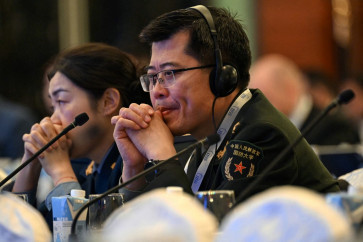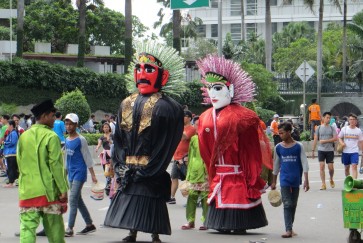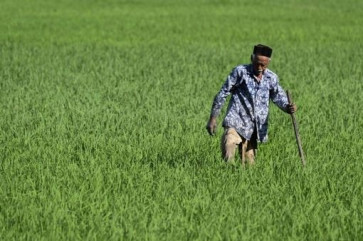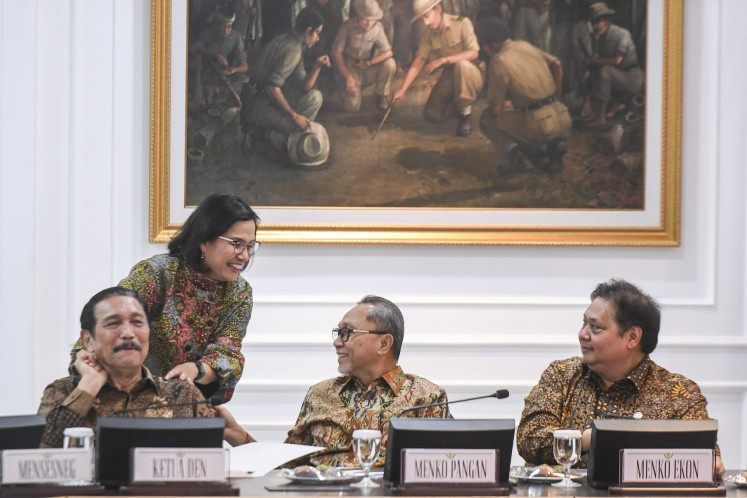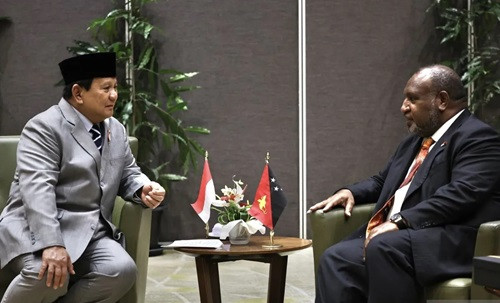Rote Ndao children still deprived of proper care, education
Light from the bright afternoon sun reflected on the glossy floor of an open veranda at the National Handicraft Council in Baa, the capital of Rote Ndao regency, East Nusa Tenggara
Change text size
Gift Premium Articles
to Anyone

L
ight from the bright afternoon sun reflected on the glossy floor of an open veranda at the National Handicraft Council in Baa, the capital of Rote Ndao regency, East Nusa Tenggara.
The veranda’s slick brown floor tiles held the reflections of 12 young activists of Forum Anak Rote Ndao (Faronda) who were sitting and making a picture of a human body on a piece of large brown paper.
Aprilia Tamonob, a 16-year-old student from state senior high school SMA Negeri 1 Lobalain told her friends to name the parts of their bodies where they had been hit or suffered physical abuse.
Then, she said, they should describe in writing the abuse they had sustained, or witnessed, on each body part in the picture.
Aprilia wrote “slap” on the picture of her cheeks, and her friends “kick” on her foot, “pinch” on her arm and thigh, “flick” on one of her ears, and there was more.
“We have many children who suffer abuse in their families, including from their own parents. That’s just what is so frustrating for the children here,” said Aprilia, who is also the Faronda’s activity coordinator.
Aprilia and her friends in Faronda shared their experiences on the sidelines of a six-day media visit to World Vision Indonesia’s (WVI) programs in Rote Ndao, which ended on May 21.
Violence against women and children was chosen as one of the topics discussed that afternoon because violence had become second nature for many people living in Rote Ndao.
Aprilia said the children’s parents ran out of patience quickly, even in dealing with small things, due to the prolonged economic hardships they faced.
Violence has become a common way to release frustration in a community that is burdened by economic difficulties.
By learninGroup learning: Children Group learning: Children from Rote Ndao regency in East Nusa Tenggara study physical abuse and map the human body. JP/Elly Burhaini Faizalg to identify the violence that they suffered, Aprilia said she hoped the children could end the culture of violence that plagued the community.
Faronda, a learning forum with 85 active participants that was established on Sept. 10, 2009, emerged as a place for Rote Ndao children to sharpen their interests and talents.
Having received training on filmmaking, youths who joined the forum started a working program in 2009 by making a film titled Mutiara Pagar Selatan (South Pearl Fence).
“They made it by themselves, including writing the script and directing,” said Joseph Budianto, manager of WVI Rote Ndao Office, the local partner of WVI.
Filmmaking is one of the activities developed by WVI to provide “wider creative room for Rote Ndao children to express themselves”, Joseph said.
A training program on reproductive health issues is also provided by the forum, focusing on rasing awareness among youths about the risks of under-age marriage, which is a common practice in Rote Ndao.
Vicky Rinaldo Soeki, another student from SMA Negeri 1 Lobalain, who currently leads Faronda, said tu’u, a deeply rooted money raising tradition, had buried Rote Ndao’s people in deep poverty.
“We have no desire to demolish our tradition or simplify it,” Vicky said.
He cited as an example that in Rote Ndao a man must give a large dowry, known as tu’u belis, to the family of the woman he wished to marry.
Asking for financial assistance from the family had become a popular solution to the task, but this ended up landing young men in large debt, he said.
The problem is that most of them cannot pay back the debt, and are therefore forced to bequeath that debt to their children and even grandchildren, resulting in a debt legacy that spans many generations.
The expensive dowry also often becomes the cause of domestic violence as many husbands feel they are entitled to do anything they want to their wives after the wedding.
Joseph said it was common for local people in Rote Ndao to put on big weddings and funerals, despite their economic difficulties.
“Few people in Rote Ndao finance their children’s education or provide nutritious food for their families, but they are willing to do anything to put on large weddings and funerals even if they have to borrow money, jewelries or livestock from their families to do so,” he said.
WVI activists are running a program with leaders of nusak, a local administrative system that means literally “little kingdom” in Rote Ndao to end the poverty cycle caused by tu’u.
Under a program called Tu’u for Education, at least 19 nusak in Rote Ndao have agreed to put a cap on tu’u belis borrowing of Rp 2.5 million per marriage. They are encouraged to spend the rest of their money on their children’s education.
“With the program, people in Rote Ndao will have a better future since they might use the funds for their children’s education,” Joseph said.

